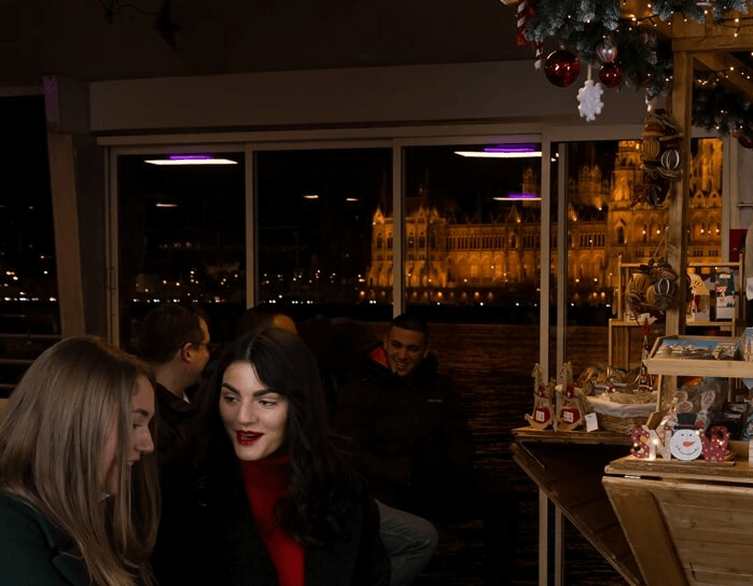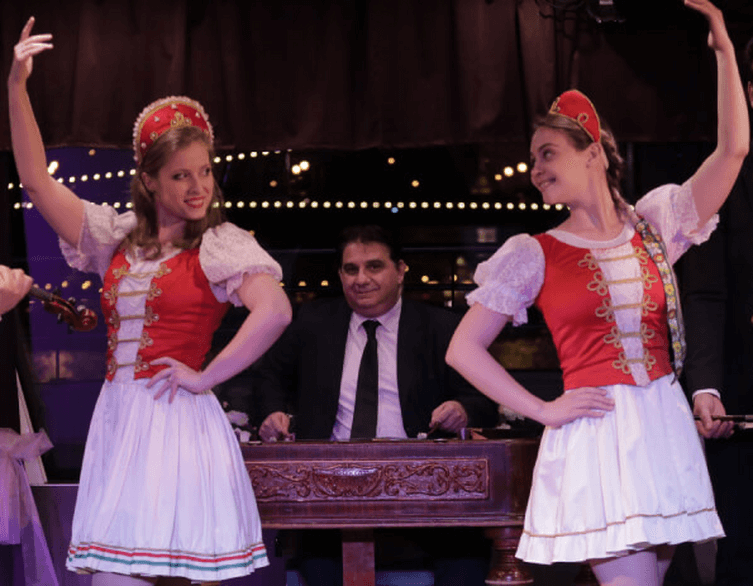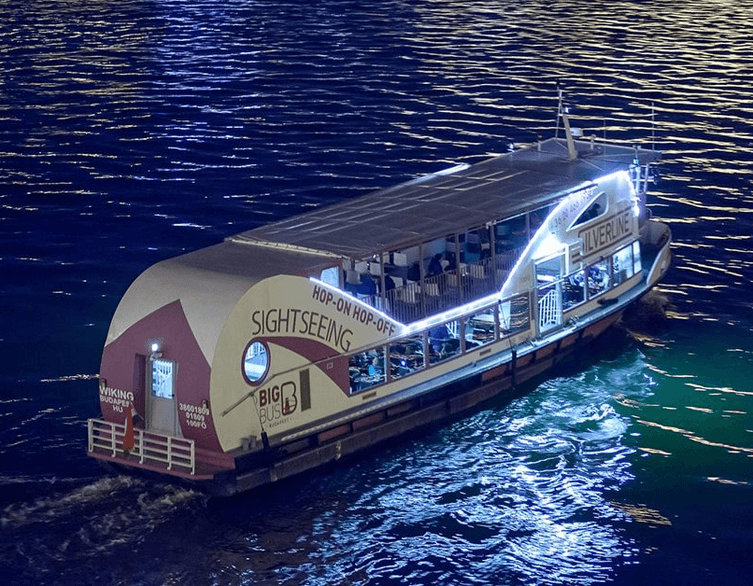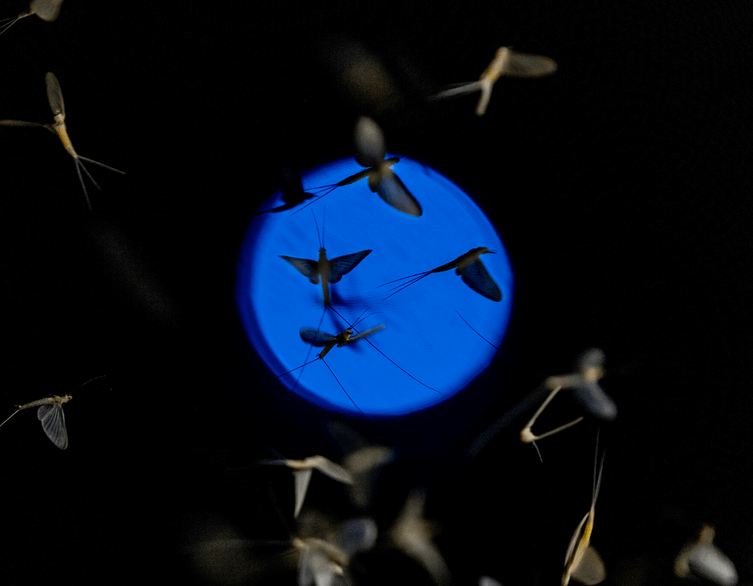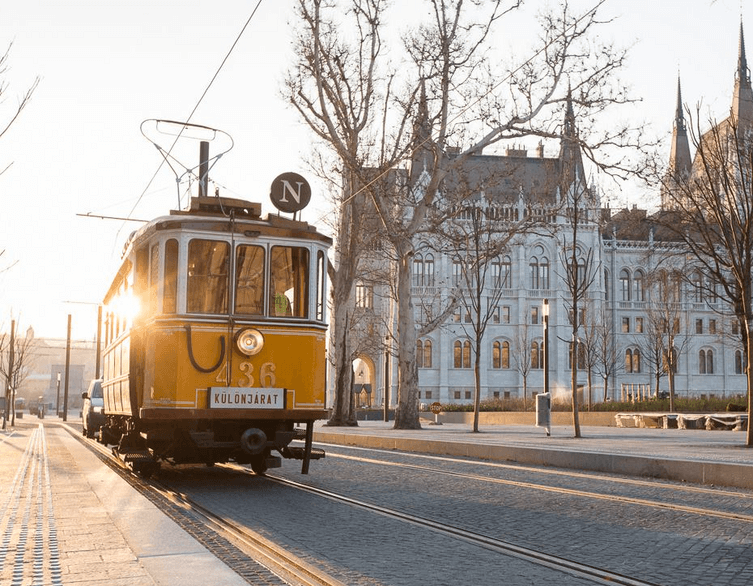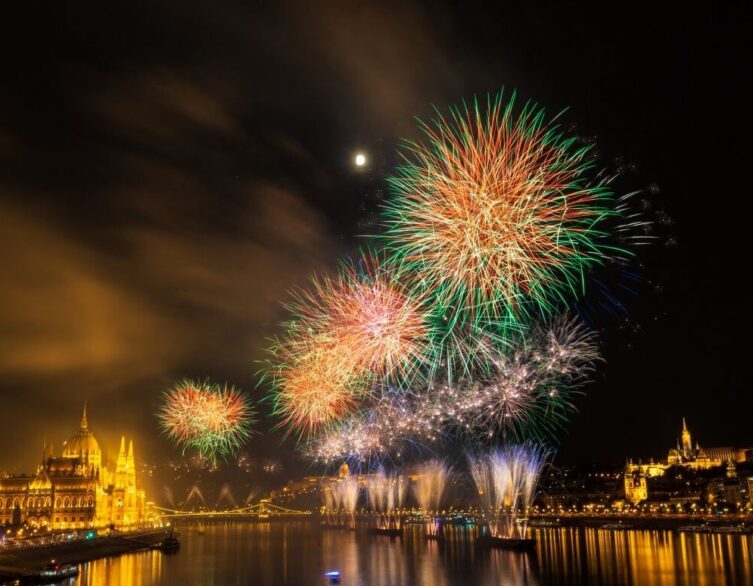The Restored Statue by the Danube: A Silent Plea for Men’s Mental Health in Budapest
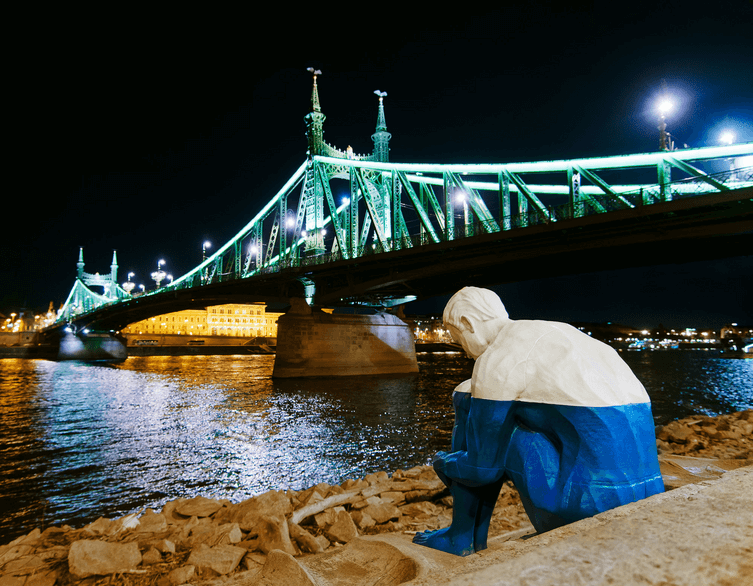
Walking along the Danube riverbank near the iconic Liberty Bridge, visitors to Budapest might notice an unusual figure sitting quietly by the water’s edge. This life-sized sculpture, known as “The Statue of Suppressed Tears,” has become more than just another piece of public art in Hungary’s capital—it represents a powerful statement about men’s mental health that resonates far beyond the city’s borders.
A Statue Born from Silence
The Hungarian Mental Health First Aid Federation installed this thought-provoking installation in April 2025, creating a visual representation of a profound social issue that often remains hidden beneath the surface. The sculpture depicts a hunched male figure, originally painted half white and half blue, with the blue symbolizing the tears and emotions that men too often keep bottled inside.
The artistic choice wasn’t arbitrary. Research shows that men cry 92% less than women, yet the suppression of these natural emotional responses can lead to anxiety, depression, and in tragic cases, even suicide. In Hungary, statistics reveal that 80% of men choose to suppress their emotions rather than express or process them in healthy ways.
A Violent Response to Vulnerability
The statue’s journey took an unexpected and deeply symbolic turn in mid-June when unknown individuals vandalized the installation, completely removing its head. This act of destruction required considerable effort and planning—the sculpture was constructed using 3D printing technology with steel reinforcement rods and concrete filling, making it far from a target of opportunity.
Rather than viewing this vandalism as merely destructive, the organization behind the statue saw it as a powerful illustration of their core message. The violence directed toward a symbol of male vulnerability perfectly demonstrated how suppressed emotions can manifest as aggression when left unaddressed.
Best deals of Budapest
Rising from Destruction with Deeper Meaning
The restoration of the statue in July 2025 marked not just a repair, but an evolution of its message. When the Hungarian Mental Health First Aid Federation rebuilt their installation, they deliberately chose not to return it to its original state. Instead, the blue color now covers more of the figure’s body, creating a visual metaphor for emotions that have risen to dangerous levels.
Erika Dudás, president of the organization, explained that this “elevated water level” represents how the problem might be even more serious than initially understood. The new design acknowledges that suppressed sadness and suppressed anger can both lead to harmful patterns and impulsive actions.
Community Response: A Solidarity Event for Change
The restoration of the statue catalyzed something powerful in Budapest’s community. On July 28th, 2025, at 6:00 PM, the Hungarian Mental Health First Aid Federation organized a solidarity sit-in beside the renewed installation. This grassroots gathering represented more than just support for a piece of public art—it became a statement of collective commitment to breaking down the barriers that prevent men from expressing their emotions freely.
The event invited anyone who believes that men should be allowed to show their feelings to join together by the Danube. Participants were encouraged to sit quietly with the statue, creating a visual representation of community support for emotional authenticity. The gathering served multiple purposes: it provided a safe space for reflection, demonstrated public backing for the statue’s message, and created opportunities for meaningful conversations about mental health.
What made this solidarity event particularly significant was its inclusive nature. While focused on men’s emotional well-being, the gathering welcomed supporters of all genders who recognized the importance of dismantling harmful social expectations. The organizers emphasized that allowing men to express vulnerability benefits not just individuals, but entire communities by creating healthier relationships and reducing the destructive outcomes of suppressed emotions.
The event also served as a powerful photo opportunity, with participants creating collective images alongside the restored statue. These photographs became symbols of a movement—visual evidence that Budapest’s residents and visitors alike were willing to stand publicly for mental health awareness and emotional freedom.
A Landmark for International Visitors
For tourists exploring Budapest’s remarkable riverside, the statue offers a unique glimpse into contemporary Hungarian society and its willingness to confront difficult social issues. Located at the Buda side of Liberty Bridge, the installation has become an unexpected point of reflection for both locals and international visitors.
The sculpture’s presence transforms a simple riverside walk into an opportunity for deeper contemplation. Its placement along one of Budapest’s most photographed stretches of the Danube creates a striking contrast—beauty and pain, tourism and reality, celebration and struggle existing side by side.
Beyond Tourism: A Universal Message
While the statue specifically addresses Hungarian social norms, its message transcends cultural boundaries. Visitors from around the world can recognize similar patterns in their own societies, where traditional masculine ideals often discourage emotional expression. The installation serves as a bridge between cultures, using the universal language of art to communicate about mental health challenges that affect men globally.
The success of the campaign has been remarkable, generating a 450-fold increase in social media engagement and a 30% rise in calls to mental health helplines. These numbers represent more than statistical success—they indicate real people reaching out for help, conversations starting, and stigmas beginning to break down.
A Living Monument to Change
The statue’s extended permit, now running until May 2026, ensures that this important conversation will continue. The organization regularly hosts solidarity events at the site, creating opportunities for public dialogue about emotional health and the importance of seeking help when needed.
For visitors to Budapest, encountering this statue offers more than just another photo opportunity. It presents a chance to witness a society actively working to change harmful social norms and create space for authentic human emotion. The figure sitting by the Danube represents not just Hungarian men, but anyone who has ever felt the weight of unexpressed feelings.
Planning Your Visit
The Statue of Suppressed Tears can be found at the foot of Liberty Bridge on the Buda side of the Danube. The installation is accessible 24 hours a day and has become a meaningful stop for those interested in contemporary social art and mental health advocacy.
Whether you’re drawn by curiosity about modern Hungarian culture, interest in public art, or personal connection to the themes of mental health, this quiet figure by the river offers a profound reminder that strength often lies not in silence, but in the courage to speak, to feel, and to seek help when needed.
The statue stands as proof that even in destruction, important messages can emerge stronger and more relevant than before. In a world where men’s mental health remains a critical yet often overlooked issue, Budapest’s riverside figure continues its silent but powerful plea for understanding, acceptance, and change.
Related news



